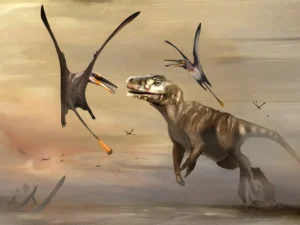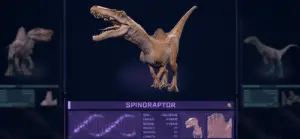How to Identify the Dinosaur That Has Plates on Its Back
The dinosaur with plates on its back is the Stegosaurus. This iconic species is easily recognized by its distinctive features.
The Stegosaurus, a herbivorous dinosaur known for its row of large, bony plates along its back and spiky tail, roamed the earth during the late Jurassic period.
Belonging to the group of dinosaurs called Stegosauria, the Stegosaurus stands out in the prehistoric landscape thanks to its unusual array of dorsal plates.
Paleontologists have extensively studied these plates, debating their purpose, which may have ranged from temperature regulation to defense mechanisms or display features to attract mates.
Despite its formidable appearance, the Stegosaurus had a relatively small brain, leading to assumptions that it wasn’t the sharpest among the prehistoric giants.
Its distinctive tail spikes, known as thagomizers, however, suggest it could fiercely defend itself when necessary.
The image of the Stegosaurus endures as a symbol of prehistoric life and continues to captivate the imagination of dinosaur enthusiasts around the world.
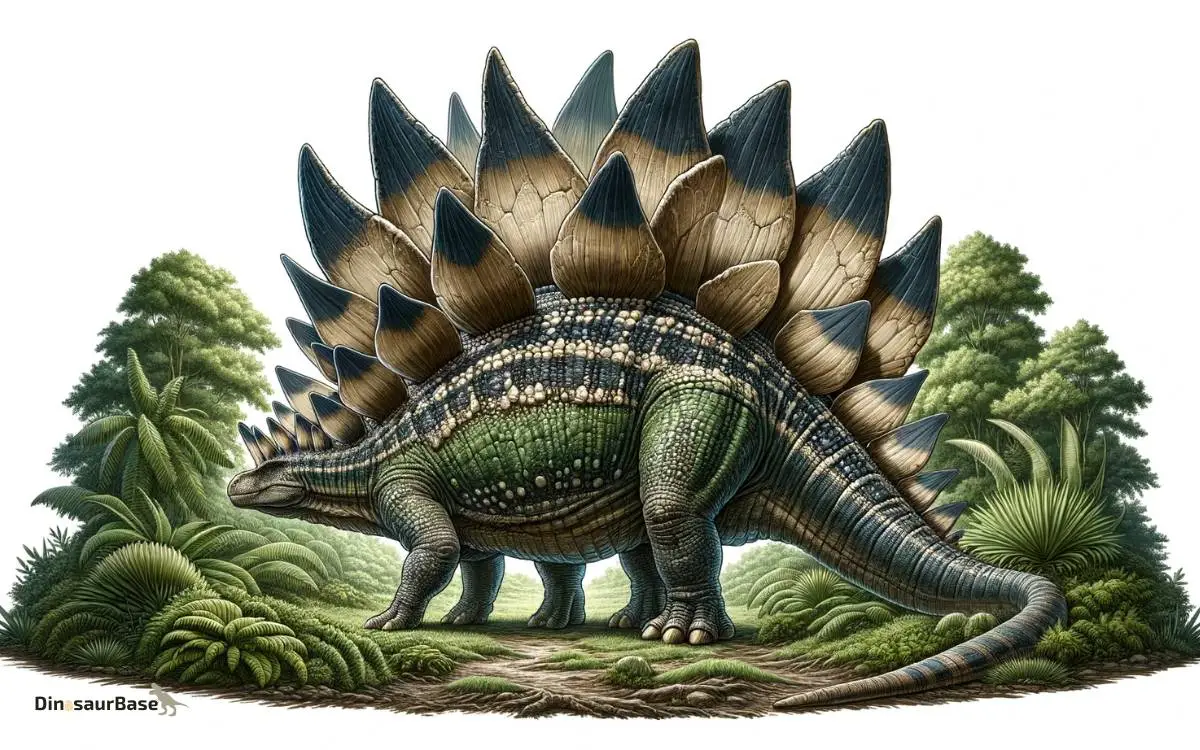
Distinctive Traits Of Plate-bearing Dinosaurs
Imagine walking through a prehistoric forest when you encounter a towering reptile. Its back boasts a row of large, bony plates.
This creature is likely a stegosaurus. But what exactly sets these plate-bearing dinosaurs apart?
Defining Characteristics
Several unique features mark these ancient giants:
- Two rows of plates running along the backbone
- Tail spikes for defense
- A distinct skull shape with a peaked head
- Herbivorous diet, evident from their teeth
Plate Functionality And Theories
Scientists debate the purpose of the plates:
- Body temperature regulation: Plates may have helped control heat.
- Display: Used to attract mates or intimidate rivals.
Their exact function remains a mystery, but these theories draw upon observed traits.
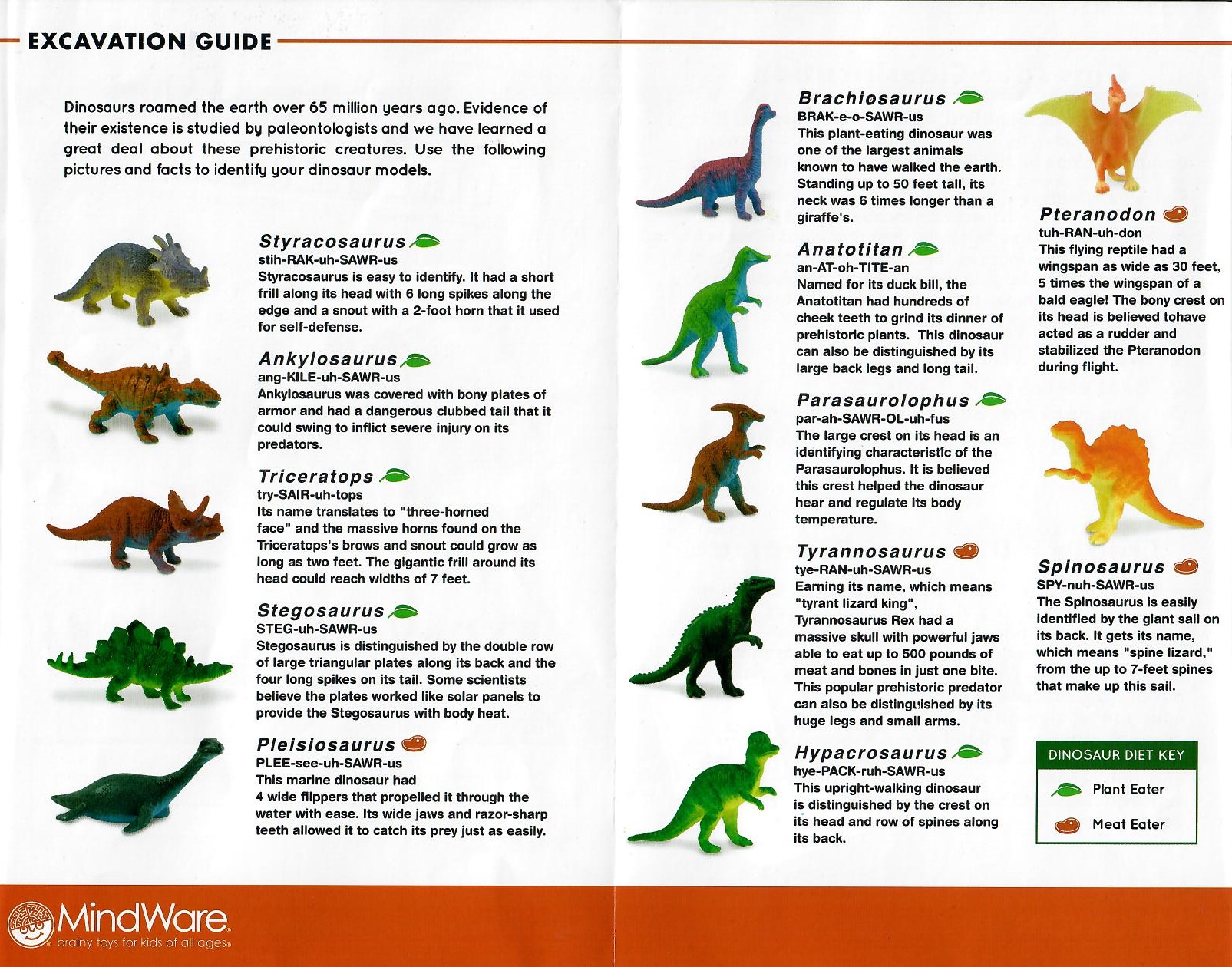
Credit: www.internationalfallslibrary.us
Fossil Evidence
The key to unlocking the mysteries of ancient dinosaurs lies within their fossil remains. Plates on a dinosaur’s back hint at a distinctive group known for their striking appearance. Understanding the origin of these features starts by examining the fossil evidence.
Discovery Sites
Fossils of dinosaurs with plates are discovered worldwide. Some notable examples include:
- North America: Findings in the USA and Canada shine a light on numerous species.
- Europe: The United Kingdom and Germany reveal insights into their prehistoric past.
- Asia: Discoveries in China enrich our knowledge about these fascinating creatures.
Paleontological Methods
Scientists use several techniques to learn about dinosaurs with plates:
- Excavation: Careful digging uncovers hidden fossils.
- Mapping: Detailed maps of bones show how dinosaurs looked.
- CT Scanning: High-tech scans reveal the internal structure of bones.
- 3D Modelling: Creates a full visual of the prehistoric animal.
:max_bytes(150000):strip_icc()/GettyImages-1149885212-9360a85a66374012b310538353c01147.jpg)
Credit: www.thoughtco.com
Comparing Relatives: Other Thyreophorans
Welcome to the fascinating world of dinosaurs, specifically the armored giants known as Thyreophorans. These prehistoric behemoths are renowned for their distinctive body armor.
Many species had plates, spikes, or a combination of both adorning their backs. Let’s delve into the details and compare these incredible creatures.
Similar Species
The Stegosaurus is the most famous dinosaur with back plates. Yet, it’s not alone. Other Thyreophorans like Kentrosaurus and Huayangosaurus also sported spiky adornments.
These relatives shared the same defensive strategy. They used their back plates as a shield against predators.
- Kentrosaurus: A smaller relative with spikes and plates.
- Huayangosaurus: An early family member with both plates and spikes.
Differences In Plate Structures
Despite their similar looks, these species had unique plate structures. Stegosaurus plates stood tall and upright. In contrast, Kentrosaurus had smaller plates that transitioned to spikes toward its tail.
| Dinosaur | Plate Size | Plate Shape | Plate Position |
|---|---|---|---|
| Stegosaurus | Large | Tall, Upright | Along the back and tail |
| Kentrosaurus | Small to Medium | Flat to Sharp Spikes | Halfway down the back to the tail |
Distinguishing between these dinosaurs is possible by examining their plate features. The size, shape, and placement on the body are key identifiers.
Stegosaurus plates are known to have been used for display and thermoregulation as well. They were unique in function and form.
Interpreting Plate Arrangements
Spotting a dinosaur with plates on its back can be thrilling. Identifying it requires a closer look at the unique plate arrangements. These plates, apart from leaving a mark on the landscape, tell a story.
A story about their lifestyle, defense mechanisms, and even social interactions. It’s like unraveling a prehistoric mystery.
Function Hypotheses
Scientists have several theories about why these plates existed. Were they for defense, attraction, or thermoregulation?
Different arrangements suggest different uses. Narrow, high plates might have been about display or thermoregulation. Wide plates could hint at protection.
- Defense: Stegosaurus had tall plates that could deter predators.
- Display: Plates might have been colorful to attract mates.
- Thermoregulation: Some theorize plates helped to regulate body temperature.
Impact On Taxonomy
Dinosaurs with distinctive plate designs are placed into different categories. Fossil studies and plate analysis transform our taxonomy, classifying these creatures into more refined groups.
For instance, Stegosauridae is known for its two rows of plates. This family includes well-known species like Stegosaurus.
| Dinosaur Family | Plate Characteristics |
|---|---|
| Stegosauridae | Two rows of large, bony plates |
| Ankylosauridae | Smaller, rounded plates embedded in skin |
Every plate and spine on a dinosaur’s back serves as a clue to unlocking its identity and behavior. Interpreting these features shines a light on ancient ecosystems and the incredible diversity of life that thrived within them.
Educational And Cultural Impact
Dinosaurs captivate minds, young and old. The ones with plates on their back, particularly, spark wonder and intrigue. These prehistoric creatures serve as a bridge connecting us to Earth’s ancient past.
They ignite the imagination, fuel scientific inquiry, and bring to life the extraordinary diversity that once inhabited our planet.
Museums around the world showcase these incredible beings, while popular media ensures their legacy endures in our culture.
Museum Exhibits
Museums play a crucial role in education. They provide visual learning experiences not possible in classrooms. Behold the skeletal remains of plate-bearing dinosaurs, transforming abstract concepts into tangible relics.
Such exhibits offer insight into these extinct species, allowing visitors to comprehend their size, structure, and environment. Interactive displays tell the story of each dinosaur, making learning fun for all ages.
Table Representing Different Museums and Their Featured Dinosaurs with Plates
| Museum Name | Featured Plate-Bearing Dinosaur |
|---|---|
| Natural History Museum, London | Stegosaurus |
| Smithsonian National Museum of Natural History, Washington, D.C. | Stegosaurus |
| Field Museum, Chicago | Kentrosaurus |
Plate-bearing Dinosaurs In Popular Media
Popular media brings dinosaurs to the spotlight. Plate-bearing dinosaurs, like the famous Stegosaurus, frequently appear in films, cartoons, and books. Their distinctive silhouette with rows of armored plates makes them instantly recognizable.
This widespread representation instills curiosity and wonder, significantly boosting public interest in paleontology.
Children especially are drawn to these ancient creatures, inspiring the next generation of scientists.
- Jurassic Park: A timeless movie that showcases plate-bearing dinosaurs.
- The Land Before Time: A classic cartoon series featuring a young Stegosaurus.
- Dinosaur Train: An educational program introducing different species to children.
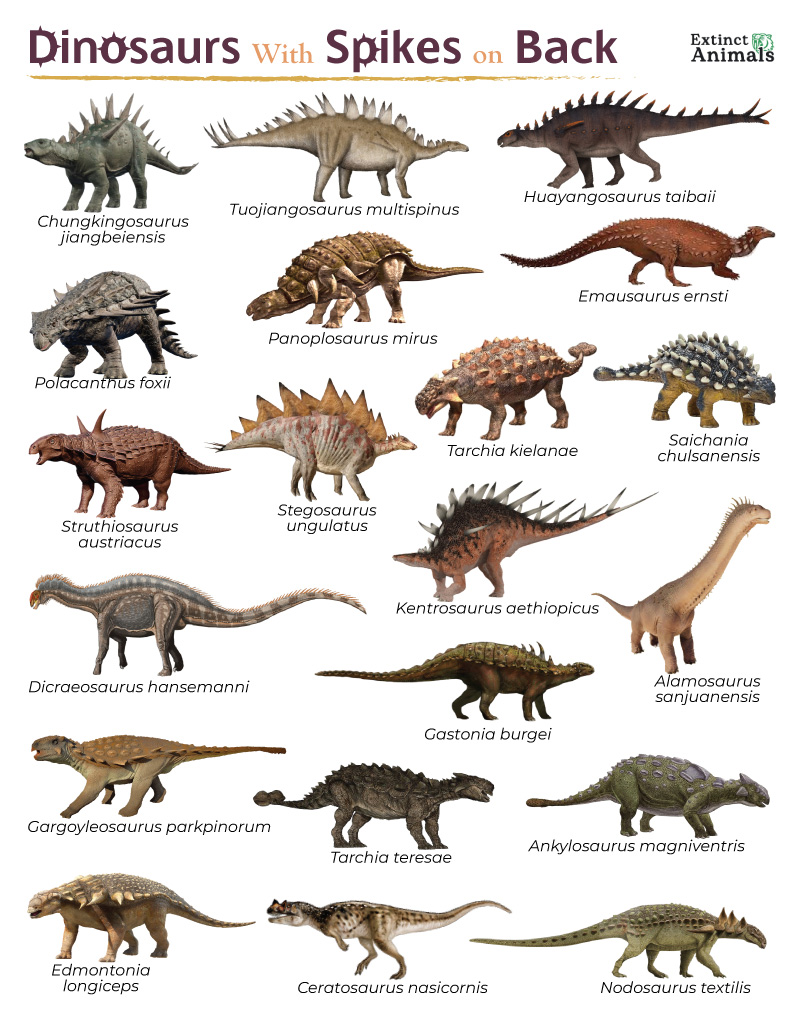
Credit: www.extinctanimals.org
Frequently Asked Questions Of How To Identify The Dinosaur That Has Plates On Its Back
What Dinosaur Has Plates On Its Back?
The Stegosaurus is the dinosaur known for having distinctive plates along its back. These plates were likely used for display and thermoregulation.
What Are Dinosaur Scales On Back Called?
Dinosaur scales on the back are commonly known as “scutes. ” These tough, plate-like structures provided protection and could have thermoregulatory functions.
What Dinosaur Has Us Upright Bony Plates On Its Back?
The Stegosaurus is the dinosaur known for its upright bony plates along its back. These distinctive features contribute to its iconic appearance.
What Are Plated Dinosaurs Called?
Plated dinosaurs are commonly referred to as Stegosauria or stegosaurs, known for their bony plates and spikes.
Conclusion
Discovering the unique characteristics of plate-backed dinosaurs can be a thrilling adventure into prehistory.
By examining fossil evidence, comparing skeletal structures, and consulting expert paleontologists, anyone can begin to unlock the secrets these ancient giants held.
Embrace your inner paleontologist and start your journey back in time—identifying these majestic creatures awaits!

